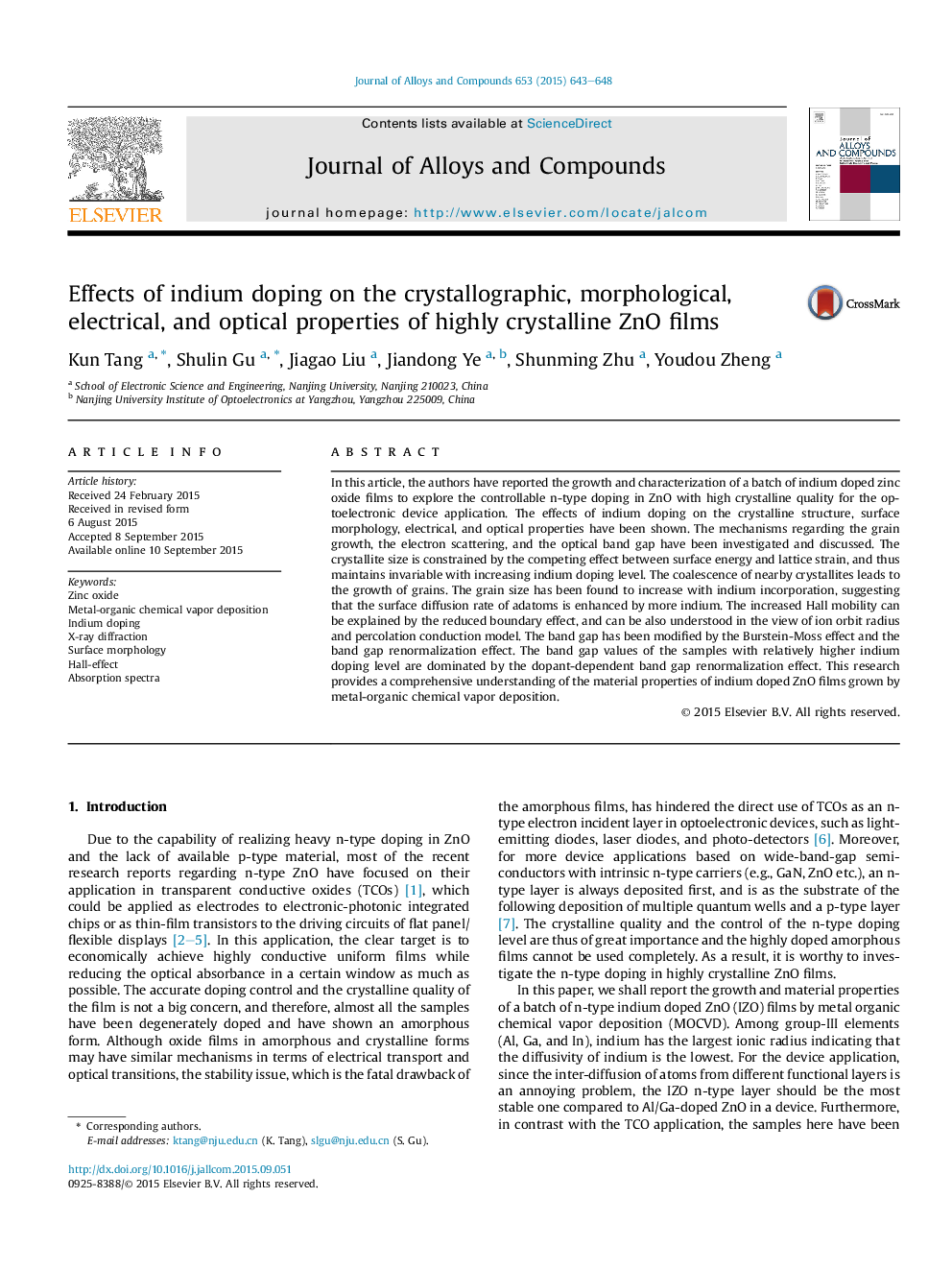| Article ID | Journal | Published Year | Pages | File Type |
|---|---|---|---|---|
| 1607607 | Journal of Alloys and Compounds | 2015 | 6 Pages |
Abstract
In this article, the authors have reported the growth and characterization of a batch of indium doped zinc oxide films to explore the controllable n-type doping in ZnO with high crystalline quality for the optoelectronic device application. The effects of indium doping on the crystalline structure, surface morphology, electrical, and optical properties have been shown. The mechanisms regarding the grain growth, the electron scattering, and the optical band gap have been investigated and discussed. The crystallite size is constrained by the competing effect between surface energy and lattice strain, and thus maintains invariable with increasing indium doping level. The coalescence of nearby crystallites leads to the growth of grains. The grain size has been found to increase with indium incorporation, suggesting that the surface diffusion rate of adatoms is enhanced by more indium. The increased Hall mobility can be explained by the reduced boundary effect, and can be also understood in the view of ion orbit radius and percolation conduction model. The band gap has been modified by the Burstein-Moss effect and the band gap renormalization effect. The band gap values of the samples with relatively higher indium doping level are dominated by the dopant-dependent band gap renormalization effect. This research provides a comprehensive understanding of the material properties of indium doped ZnO films grown by metal-organic chemical vapor deposition.
Keywords
Related Topics
Physical Sciences and Engineering
Materials Science
Metals and Alloys
Authors
Kun Tang, Shulin Gu, Jiagao Liu, Jiandong Ye, Shunming Zhu, Youdou Zheng,
